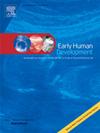中性粒细胞与淋巴细胞比值是否能准确预测早产儿新生儿败血症?
IF 2.2
3区 医学
Q2 OBSTETRICS & GYNECOLOGY
引用次数: 0
摘要
背景:败血症是新生儿死亡的重要原因。临床和实验室指标通常都没有特异性,血培养污染可能会混淆对婴儿的管理。本研究旨在利用现有的廉价检测方法--中性粒细胞与淋巴细胞比值(NLR)来预测培养阳性率,从而优化抗生素管理:分析了2015年至2020年期间因败血症接受治疗的妊娠≤32周出生婴儿的数据。根据培养阳性率对病例进行分类:i)已知病原体阳性;ii)凝固酶阴性葡萄球菌(CoNS)真阳性;iii)CoNS污染物假阳性;iv)其他污染物阳性;v)培养阴性。将 NLR 与晚期 C 反应蛋白(CRP)和未成熟中性粒细胞与总中性粒细胞比率(ITR)进行比较。本研究进行了接收者操作曲线(ROC)分析。结果显示,共有 2024 名婴儿被纳入研究:研究共纳入了 2024 名婴儿,各组之间的人口统计学差异不大。已知病原体血液培养呈阳性的婴儿的 NLR 中位数为 1.44,高于有污染物(0.75)或培养呈阴性(0.84)的婴儿。NLR、晚期 CRP 和 ITR 的曲线下面积(AUC)分别为 0.71、0.64 和 0.57。将 NLR 与晚期 CRP 相结合,AUC 将增加到 0.78(95 % C-I 0.75-0.82, p 结论:临床医生应考虑使用 NLR 和晚期 CRP:临床医生应考虑使用 NLR 作为晚期 CRP 的辅助生物标志物,以检测早产新生儿培养阳性败血症。使用 ITR 并不能提高败血症诊断的准确性。本文章由计算机程序翻译,如有差异,请以英文原文为准。
Is neutrophil to lymphocyte ratio an accurate predictor of neonatal sepsis in premature infants?
Background
Sepsis is a significant cause of neonatal mortality. Both clinical and laboratory markers are often non- specific, and a blood culture contaminant may confuse management of the infant. This study aims to use an existing, inexpensive test, the neutrophil-to-lymphocyte ratio (NLR), to predict culture positivity and thus optimise antibiotic management.
Methods
Data on infants born ≤32 weeks gestation from 2015 to 2020 who were treated for sepsis were analyzed. Episodes were categorised based on culture positivity: i) positive with known pathogens, ii) true positive with coagulase-negative staphylococci (CoNS), iii) false positive with CoNS contaminants, iv) positive with other contaminants, and v) negative culture. NLR was compared with late C-reactive protein (CRP) and immature-to-total neutrophil ratio (ITR). Receiver operating curve (ROC) analysis was performed in this study. A cut- off value of 1.2 was chosen for NLR to detect culture.
Results
A total of 2024 infants were included in the study, with no significant differences in demographics between groups. Infants with positive blood cultures of known pathogens had higher median NLR of 1.44 compared with those with contaminants (0.75) or negative cultures (0.84). A NLR cut-off value of 1.2 gave a sensitivity of 65.7 % and specificity of 63.7 %.The area under the curve (AUC) for NLR, late CRP and ITR were 0.71, 0.64 and 0.57 respectively. Combining NLR with late CRP would increase the AUC to 0.78 (95 % C·I 0.75–0.82, p < 0.01), whereas the addition of ITR to NLR and late CRP would not improve this. In a secondary analysis, between true and contaminant CoNS positivity, NLR and ITR could not be used to differentiate between these groups (p < 0.05 and 0.33), but late CRP could (p < 0.01).
Conclusions
Clinicians should consider the use of NLR as an adjunct biomarker to late CRP in detecting culture positive sepsis in premature neonates. The use of ITR does not improve diagnostic accuracy for sepsis.
求助全文
通过发布文献求助,成功后即可免费获取论文全文。
去求助
来源期刊

Early human development
医学-妇产科学
CiteScore
4.40
自引率
4.00%
发文量
100
审稿时长
46 days
期刊介绍:
Established as an authoritative, highly cited voice on early human development, Early Human Development provides a unique opportunity for researchers and clinicians to bridge the communication gap between disciplines. Creating a forum for the productive exchange of ideas concerning early human growth and development, the journal publishes original research and clinical papers with particular emphasis on the continuum between fetal life and the perinatal period; aspects of postnatal growth influenced by early events; and the safeguarding of the quality of human survival.
The first comprehensive and interdisciplinary journal in this area of growing importance, Early Human Development offers pertinent contributions to the following subject areas:
Fetology; perinatology; pediatrics; growth and development; obstetrics; reproduction and fertility; epidemiology; behavioural sciences; nutrition and metabolism; teratology; neurology; brain biology; developmental psychology and screening.
 求助内容:
求助内容: 应助结果提醒方式:
应助结果提醒方式:


